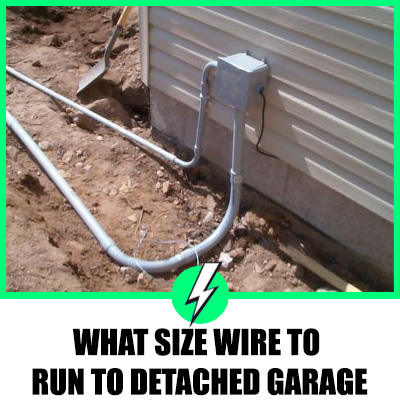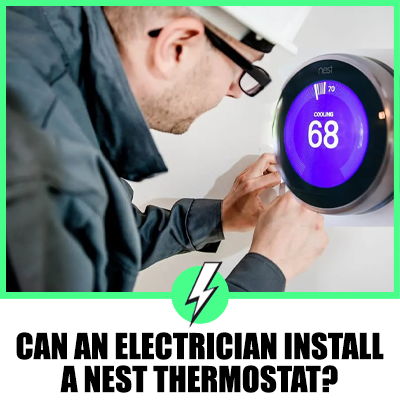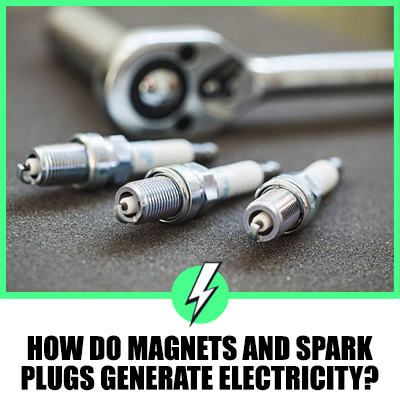What Size Wire To Run To Detached Garage
Like other parts of the world, British Standard BS 7671 also warrants different outdoor wiring specifications. Whether installing light fixtures, powering an electric door, or upgrading your garage, installing the right wire is critical.
Regardless of the purpose, a detached garage requires extensive cabling. The reason is that the electricity network needs an extension. Also, the distance from the house is a huge consideration.

In this post, we break down the correct size wire that should run to a detached garage. Let’s begin with the right type of wire for this purpose.
Contents
Best wire for connecting a detached garage
For outdoor use and cabling, steel wire armoured or SWA cable is the best choice. This wire has four-core insulation, which makes it very safe for underground cabling. Also, SWA cables come in a different range of core insulations, between two to four.
SWA comes in two types of insulation PVC and XLPE. Both insulation types have a high operating temperature of 70° C and 90° C, respectively. Therefore, it is excellent in carrying high capacity currently.
However, only the SWA cable with PVC insulation meets British Standard BS 5467 and the International Electrotechnical Commission standards. In commercial terms, this cable with PVC is called SWA BS 5467 Cable.
Other names of the SWA cable include armoured cable, booklet armoured cable, and mains cable.
Four-core steel wire armoured cables come in different sizes. They are:
- 1.5 mm
- 2.5 mm
- 4 mm
- 6 mm
- 10mm
- 16mm
- 25 mm
- 35 mm
- 50 mm
- 70 mm
- 95 mm
- 120mm
- 150 mm
- 185 mm
- 240 mm
- 300 mm
What size SWA cable to use for a detached garage?
The correct size of the steel wire armoured cables for a detached garage will depend on the intended use. Assuming that you want the garage’s electricity to power light fixtures and a couple of socket outlets, a 6mm SWA cable should suffice.
But this is on the condition that the garage has no extraneous-conductive-parts. This can be such structures as existing earthed metalwork or a metallic water supply. Under such conditions, you will need to use the 10mm sized cable.
You have to take factors such as voltage drop, which transitions us smoothly to the next topic.
Factors to consider while installing electrical supply to a detached garage
Taking electrical connections outside poses its challenges and requirements. The traditional way of installing external light connections by using the spare way in the consumer unit does not work in most cases.
So here are the factors to consider while installing electricity outside.
Correct installation
While it is critical to decide on the right size of the wire, correct installation is paramount. In the UK, steel wire armoured cables must be buried no less than 600 mm below the surface. This prevents the cable from being damaged from future activities such as digging. Also, a cable tape that serves as a marker should be put in place. The recommended distance between the cable and the marker tape is about 160 mm.
Power supply
The point where you will harness the power for the detached garage is also a point of consideration. Since the traditional method of using the spare way in the consumer unit no longer applies, circuit breakers are the best choice. Typically, BS EN 60898 or BS EN 61009 circuit breakers work as the distribution unit. Plus, they also protect against fault-current and overload.
Of course, this does not mean that you should eliminate the use of a fuse for over-current protection. Furthermore, the use of RCD protection may also be necessary depending on the detached garage’s current requirements.
Voltage drop
Between the source of electrical supply and the point of use, a certain level of voltage decreases. This is called the voltage drop. At full load, the maximum voltage drop between the two points should not be exceeded. For most circuits in Britain, this is about 5%. However, for lighting circuits, this is about 3% under the 18th Edition changes.
This drop in the voltage varies slightly between the two wires with PVC and XLPE insulation for steel wire armoured cables. Nevertheless, your design for installing electricity in a detached garage must include the consideration for voltage drop.
Shock protection
As with other types of electrical works, protection is critical when it comes to taking the electricity to a detached garage. The standard protective measure against electrical shocks is using Automatic Disconnection of Supply or ADS.
These shock protection devices must comply with the requirements of BS 7671, Section 411, to be precise. For a place such as a detached garage, the disconnection time should be more than 0.4 seconds.
Also, the primary circuit that supplies the current to the socket outlets should have extra protection. This is typically in the form of RCD that complies with the BS 7671 regulations under section 415.1.1.
Provision for a TT system
In places where there are extraneous-conductive-parts, a provision for a TT system is necessary. According to Regulation 542.1.2.3 and 411.5.2, this earthing system includes the use of an earth electrode with an RCD.
However, extraneous-conductive-parts such as water pipes should be exclusively outside the garage. Also, you will need to use a 10 mm2 bonding conductor at the very least. This is irrespective of the power requirements in the detached garage.
Final thoughts
Taking electricity outside has a different set of challenges and even more so with a detached garage. Selecting the right equipment, starting with the right size of the wire, is paramount.
A typical garage does not have insulation that can pose new challenges. Most commonly, the fluctuations in the temperature can cause build-up condensation. When this happens, water collecting on electrical parts and accessories can result in a severe hazard. Therefore, consider every internal and external influence while installing electricity in a detached garage.
Nevertheless, if you carefully follow the national guidelines, there is no reason why you can not make this process safe and successful.





